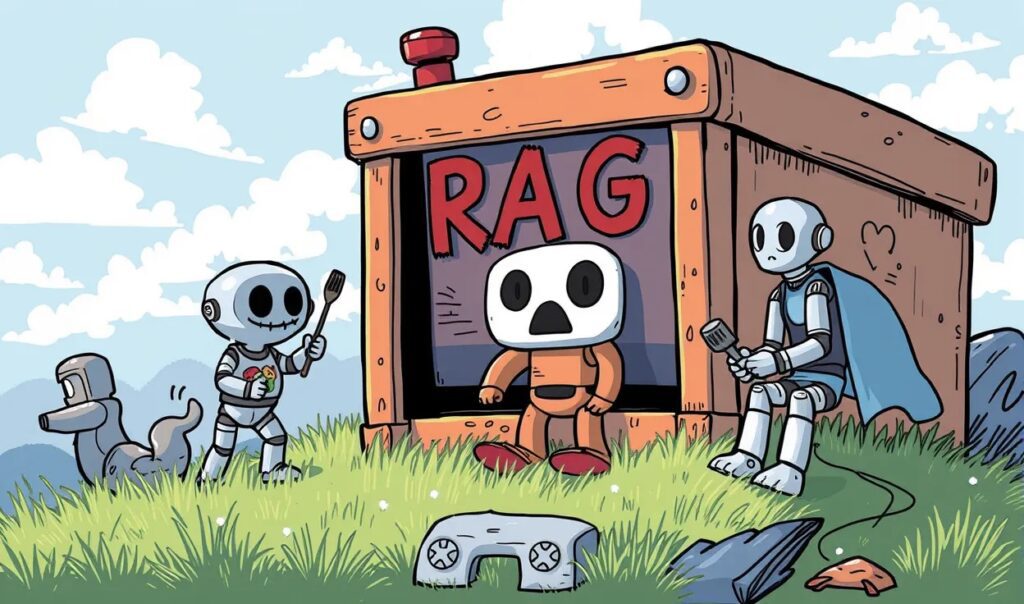
The Power of Real-Time Customer Support
Customer expectations are higher than ever. They don’t just want quick replies—they want accurate and contextually relevant responses at any time.
That’s why businesses are increasingly turning to real-time customer support solutions like AI chatbots to meet these demands. But even the most sophisticated chatbots can fall short when it comes to domain-specific questions or complex queries.
That’s where Retrieval-Augmented Generation (RAG) comes in. This technology is reshaping the landscape of customer support by injecting real-time, contextual knowledge into AI-driven interactions. RAG enhances chatbots, enabling them to offer not just quick responses, but accurate and informed solutions. Let’s dive into how RAG is elevating customer support to the next level.
What is RAG, and Why Does It Matter?
Understanding Retrieval-Augmented Generation
RAG combines the power of machine learning models with real-time data retrieval. Unlike traditional AI, which generates responses based only on training data, RAG accesses external databases or live knowledge sources to craft accurate, context-aware answers.
This makes it perfect for dynamic industries where information changes frequently—like e-commerce, healthcare, and tech.
The Role of RAG in Customer Support
For businesses, RAG ensures that responses are not just general but specific and relevant. Customers don’t have to wade through outdated FAQs; instead, they get accurate, actionable information tailored to their query.
By leveraging RAG-enhanced chatbots, companies can handle complex, nuanced questions faster than ever before.
Why RAG is Transforming Chatbot Functionality
Traditional chatbots often get stuck when they encounter out-of-scope queries. When a customer asks a question outside of the chatbot’s training data, they’re usually met with canned responses that feel, well, unsatisfying. In contrast, RAG models shine in these moments.
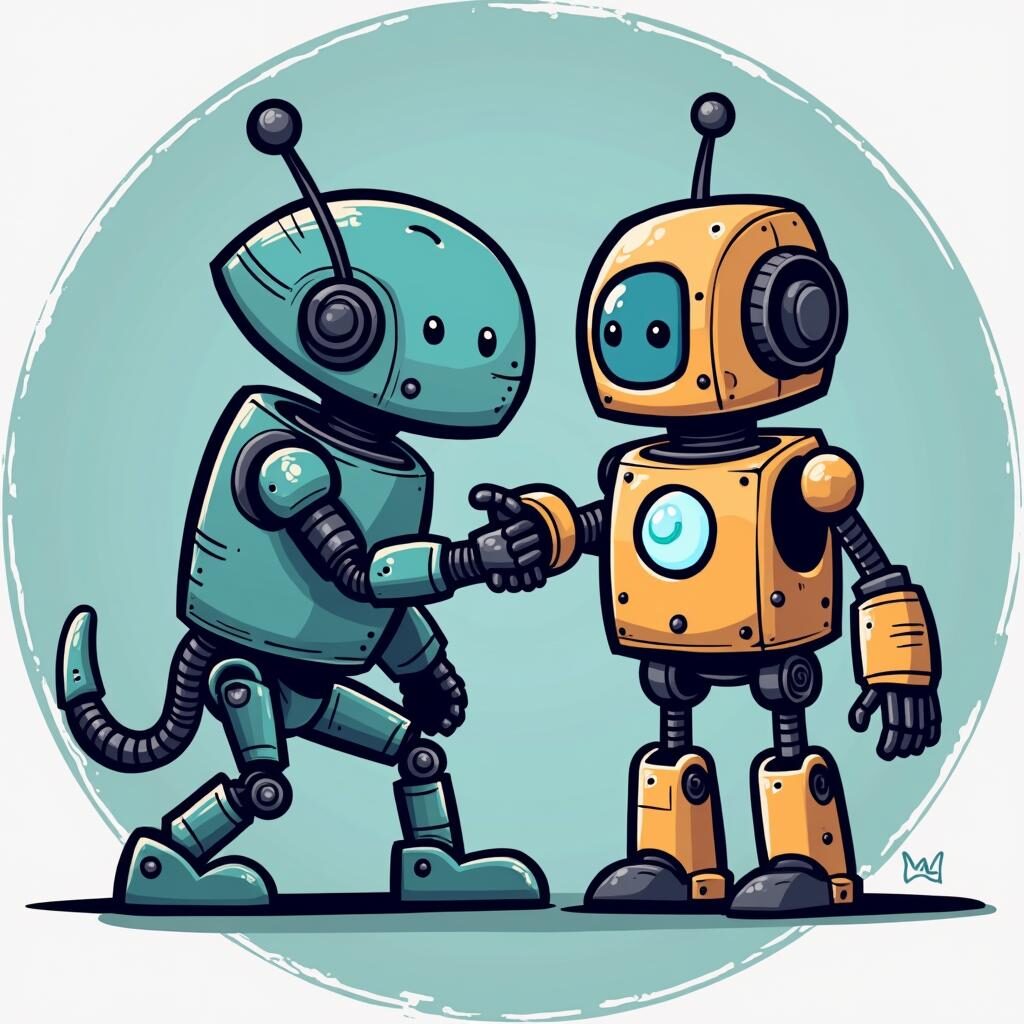
RAG chatbots can retrieve domain-specific knowledge from outside their initial training set, creating an experience where the bot becomes a true problem solver. Whether it’s providing detailed product information or offering step-by-step instructions for complex troubleshooting, RAG ensures that the chatbot doesn’t just guess—it knows.
And when it comes to customer service, that knowledge can be priceless.
Domain-Specific Knowledge: The Missing Ingredient
Many industries require deep domain expertise to handle customer queries effectively. For instance, a legal firm’s chatbot might need to answer questions about specific laws, while a healthcare provider’s bot must offer accurate medical advice based on the latest research.
RAG provides a solution to this problem by enabling chatbots to access and incorporate external, domain-specific knowledge instantly. By integrating industry-specific databases or live data streams, chatbots become much more than basic virtual assistants—they become indispensable resources. This means less frustration for customers and greater efficiency for businesses.
How RAG Integrates Domain Knowledge for Better Responses
The real magic of RAG happens in the background. When a user asks a question, the system first identifies relevant documents or knowledge sources that can answer the query. This might include anything from internal databases to external web content or specialized industry papers.
Next, the model uses this retrieved data to generate a tailored response that directly addresses the customer’s needs. This ability to access specific, real-time information sets RAG-based chatbots apart from their predecessors.
For example, a RAG chatbot in an insurance company might be able to provide up-to-the-minute policy details or explain new regulations in a clear and concise manner. This means customers get the right answers without the usual back-and-forth or long wait times.
Personalized Customer Interactions through RAG-Powered Chatbots
One of the significant advantages of RAG is its ability to craft personalized responses. Traditional chatbots often give generic replies that might not fully satisfy the customer’s specific question. But with RAG, chatbots can pull from personalized data sources, like customer profiles or recent interactions, to offer responses that feel tailor-made.
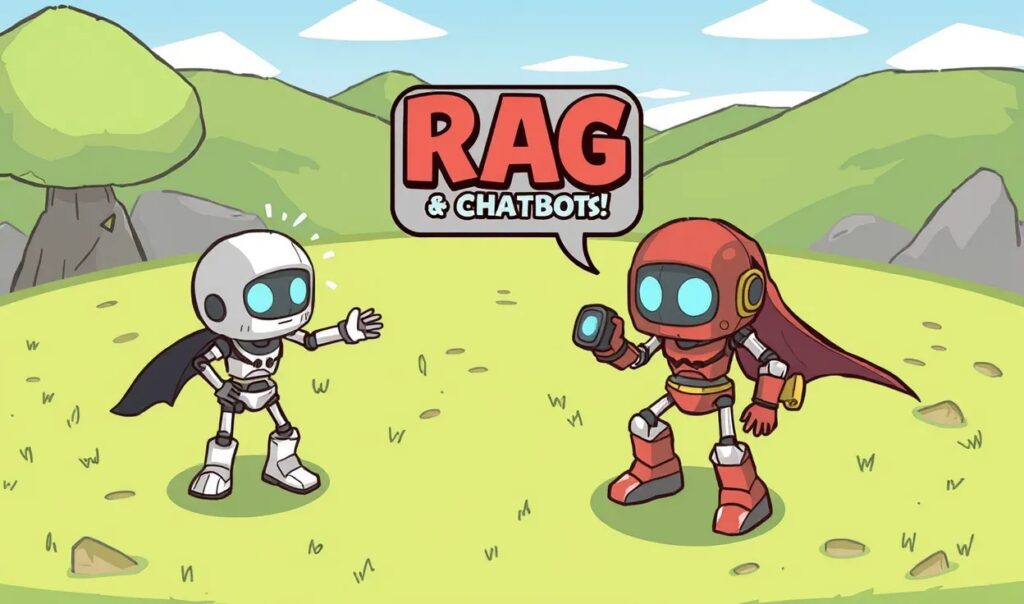
Imagine you’re interacting with a banking chatbot and you ask a question about your mortgage plan. Instead of offering general information, the chatbot uses RAG to retrieve your specific mortgage details, providing a clear, actionable response that feels like a personal conversation rather than a one-size-fits-all answer.
These interactions create a more satisfying customer experience because they are context-aware and designed with the user in mind.
The Role of RAG in Reducing Response Time
In a world where every second counts, speed is crucial in customer support. RAG not only enhances the quality of responses but also significantly reduces the time it takes to provide an answer.
Since the system can quickly search and retrieve relevant knowledge from a vast array of sources, the response time is dramatically cut down. No more waiting for a human agent to step in for complex queries. RAG efficiently bridges that gap, providing fast, informed answers in real-time.
This swift response helps businesses keep their customers happy and satisfied—something that is crucial in competitive industries like e-commerce or telecommunications.
Leveraging External Knowledge Sources for Dynamic Answers
RAG-enabled chatbots truly stand out by their ability to leverage dynamic, external knowledge sources. They aren’t limited to static, pre-programmed data; instead, they can pull in fresh, up-to-date information as needed. Imagine a customer asking for the latest product specifications or the newest software update. A RAG-powered chatbot can retrieve and deliver this real-time information seamlessly.
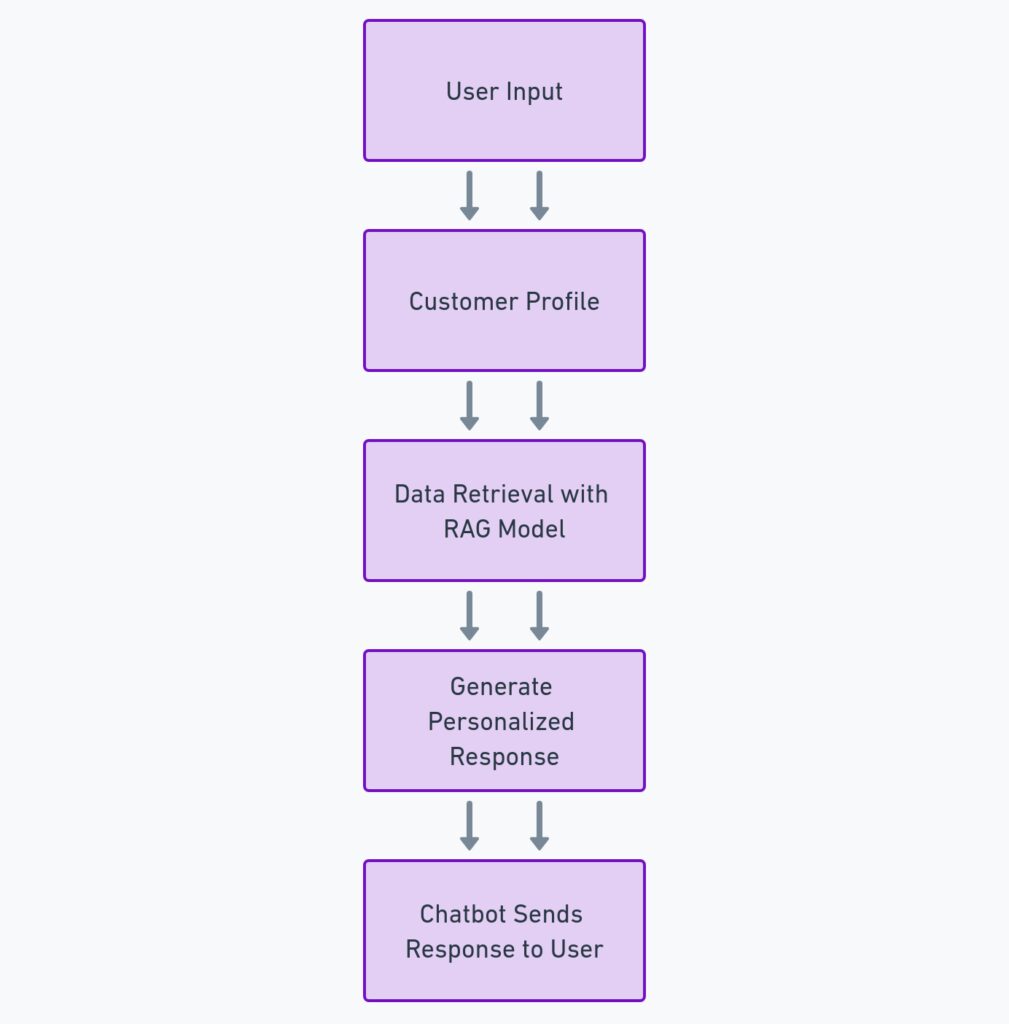
This dynamic approach is especially valuable in industries where information rapidly evolves. In tech support, for instance, users often need guidance on new features or troubleshooting advice that hasn’t made it into the official support documentation yet. By accessing current, external sources—like FAQs, forums, or knowledge bases—RAG ensures that the chatbot provides answers that are relevant and timely.
Scalability: Handling Complex Queries at Scale with RAG
RAG-powered chatbots excel at scaling support operations without compromising the quality of responses. Traditional systems often falter when faced with a high volume of complex queries, but RAG bots thrive by dynamically retrieving and synthesizing information from external databases or APIs.
This capability ensures that every customer receives accurate, context-specific responses, even during peak demand periods. Businesses can thus handle thousands of interactions simultaneously, offering consistent service across multiple channels.
Moreover, RAG systems continuously improve through feedback loops. As they process more queries, they refine their ability to address recurring and evolving customer concerns. This adaptability makes them ideal for industries with diverse and ever-changing requirements, such as e-commerce, healthcare, and finance. By scaling effortlessly and tackling nuanced questions with ease, RAG-powered chatbots empower organizations to meet growing customer expectations without overburdening human agents.
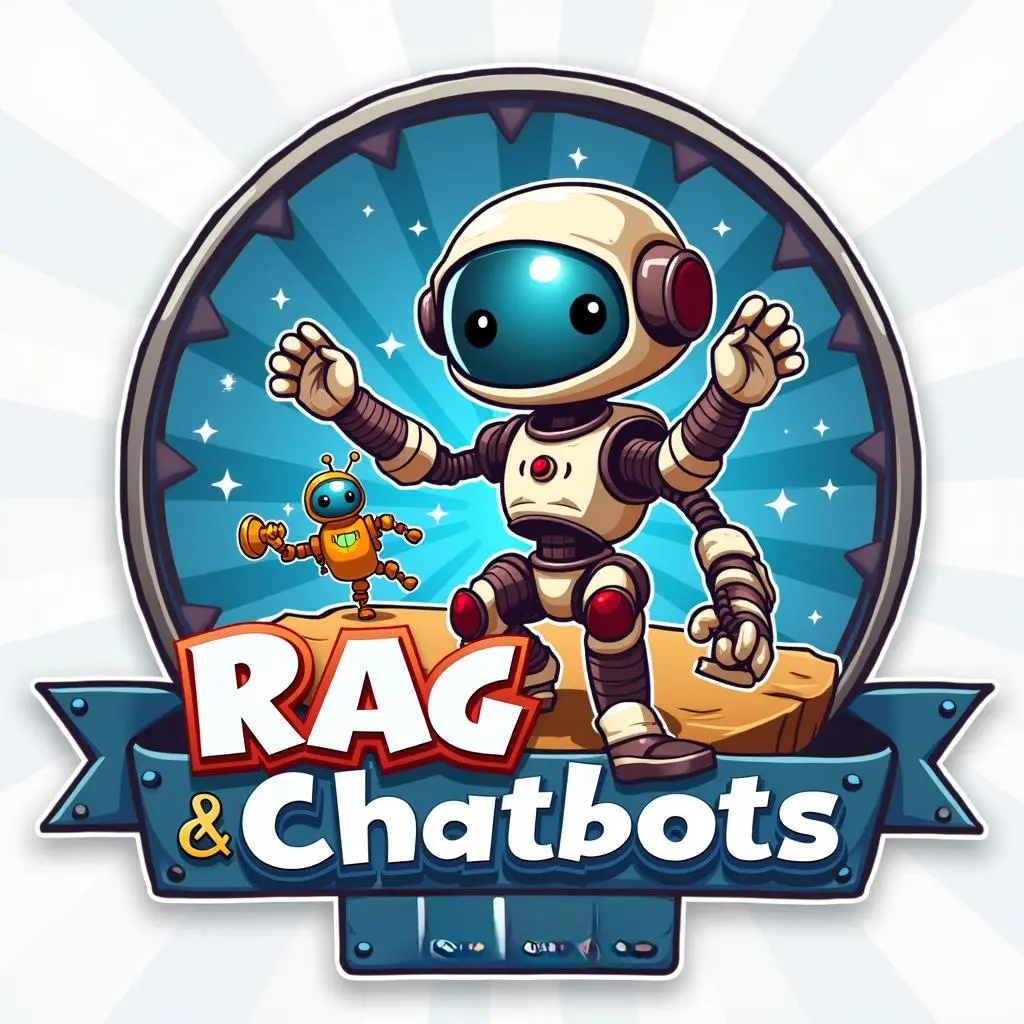
Implementing RAG: The Key Challenges and Solutions
As with any transformative technology, implementing RAG in a customer support environment comes with its own set of challenges. For one, integrating external knowledge sources requires ensuring that the data being retrieved is reliable and accurate. Pulling incorrect or outdated information can cause more harm than good.
Another challenge is maintaining consistency across customer interactions. While RAG can enhance chatbots, it’s crucial to ensure that the responses generated remain consistent with the brand’s tone and messaging.
However, these challenges can be overcome by carefully curating knowledge sources and using advanced quality control mechanisms to monitor and filter retrieved data. Businesses that take the time to implement RAG thoughtfully will see a significant improvement in their customer support offerings.
RAG & Chatbots in Action: Use Cases Across Industries
RAG-powered chatbots are versatile, providing businesses across various sectors with innovative solutions for customer support. Let’s explore how different industries are leveraging this technology.
E-Commerce: Boosting Sales and Solving Queries
Instant Product Recommendations
By tapping into real-time inventory systems, RAG chatbots suggest products tailored to customer preferences. If an item is out of stock, they can recommend alternatives on the spot.
Seamless Order Tracking
Gone are the days of vague tracking updates. A RAG chatbot integrates with your logistics system to provide customers with real-time delivery updates. This transparency keeps them informed and satisfied.
Efficient Returns Processing
Handling returns can be tedious, but RAG chatbots simplify the process. They retrieve relevant policies and generate personalized instructions for every customer interaction.
Healthcare: Enhancing Patient Experiences
Real-Time Appointment Scheduling
Patients often need quick access to scheduling. A RAG-powered chatbot can pull live availability from clinic systems, allowing users to book appointments effortlessly.
On-Demand Health Information
Patients asking medical questions can get accurate, up-to-date responses from RAG bots, pulling from verified medical databases. This ensures they receive reliable information without needing to wait for a human expert.
Prescription Management
Chatbots can fetch prescription details, send refill reminders, and even notify patients of drug interactions, improving medication adherence.
Travel and Hospitality: Delivering Real-Time Support
Flight and Hotel Updates
A RAG chatbot can retrieve the latest flight schedules, hotel availability, and even travel restrictions—giving travelers instant answers during urgent situations.
Customized Itineraries
By analyzing user preferences, these bots suggest travel packages, restaurants, or local attractions, creating a tailored travel experience.
Managing Cancellations
Whether it’s a delayed flight or a last-minute hotel cancellation, chatbots offer alternative solutions within seconds.
Banking and Finance: Simplifying Complex Interactions
Account Queries Made Easy
From balance inquiries to transaction histories, RAG bots provide users with secure, real-time updates by accessing financial databases.
Fraud Detection and Alerts
Chatbots equipped with RAG can notify customers of unusual account activity, offering immediate advice on securing their accounts.
Personalized Investment Advice
For wealth management firms, RAG bots can suggest investment options based on current market data and user preferences.
RAG vs Traditional Chatbots: A Performance Comparison
RAG (Retrieval-Augmented Generation) chatbots outperform traditional chatbots by leveraging real-time data retrieval, making their responses more accurate and dynamic. Traditional chatbots rely heavily on pre-programmed responses and static training data, limiting their ability to handle complex or updated queries. For instance, a traditional bot might struggle to answer questions about today’s inventory levels or recent policy changes, whereas a RAG-powered bot can fetch live data to provide precise, context-aware answers.
Another key difference lies in personalization and adaptability. Traditional chatbots often rely on broad, generalized scripts that can feel impersonal. RAG systems, on the other hand, integrate user data and external knowledge sources to craft highly tailored interactions. This ability to retrieve the latest information ensures relevance, enhancing user satisfaction. While traditional chatbots are useful for basic tasks, RAG-powered bots are far better equipped to handle nuanced queries, making them essential for businesses aiming to deliver smart, scalable, real-time customer support.
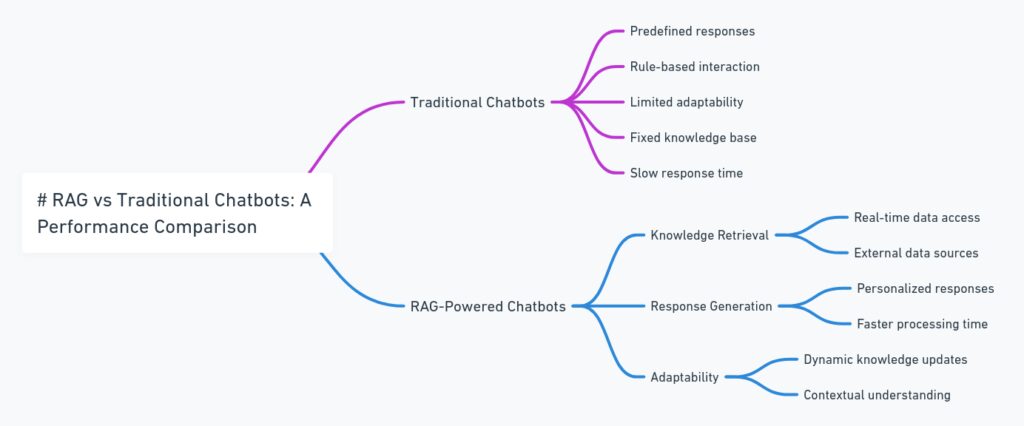
RAG, on the other hand, significantly reduces the need for such escalations. By retrieving external data and generating responses in real-time, RAG-equipped chatbots offer greater accuracy, especially with complex or domain-specific questions. They can answer a wider range of queries and continue to improve over time as they pull from ever-evolving knowledge repositories. This difference leads to higher engagement and fewer abandoned conversations.
How to Start Enhancing Your Chatbots with RAG
For businesses looking to get started with RAG technology, the key is to first assess the specific needs of your customer support system. Identify the areas where domain-specific knowledge is most crucial—whether it’s product support, legal information, or troubleshooting. Once those needs are clear, the next step is integrating RAG with your existing chatbot infrastructure.
This may involve incorporating external knowledge bases or APIs that provide real-time data. Ensuring that your chatbot can access reliable, up-to-date information is critical to the success of RAG implementation. From there, it’s about fine-tuning the system so it delivers responses that are both accurate and aligned with your brand’s voice.
Common Misconceptions About RAG and AI in Customer Support
Despite its benefits, there are some common misconceptions about RAG and AI in customer service. One belief is that AI chatbots, even with RAG, are still too impersonal or cold to handle meaningful customer interactions. However, in reality, RAG helps create more human-like conversations by generating responses based on real-world information, leading to more natural and helpful exchanges.
Another misconception is that RAG-based systems are too complicated to implement. While the technology is sophisticated, businesses of any size can take advantage of pre-built solutions or work with providers who specialize in RAG integration. With the right approach, even small to medium-sized businesses can use RAG to vastly improve their customer support efforts.
By dispelling these myths, businesses can fully embrace the potential of RAG technology and deliver superior customer experiences.
Personalized Customer Interactions through RAG-Powered Chatbots
One of the significant advantages of RAG is its ability to craft personalized responses. Traditional chatbots often give generic replies that might not fully satisfy the customer’s specific question. But with RAG, chatbots can pull from personalized data sources, like customer profiles or recent interactions, to offer responses that feel tailor-made.
Imagine you’re interacting with a banking chatbot and you ask a question about your mortgage plan. Instead of offering general information, the chatbot uses RAG to retrieve your specific mortgage details, providing a clear, actionable response that feels like a personal conversation rather than a one-size-fits-all answer.
These interactions create a more satisfying customer experience because they are context-aware and designed with the user in mind.
The Role of RAG in Reducing Response Time
In a world where every second counts, speed is crucial in customer support. RAG not only enhances the quality of responses but also significantly reduces the time it takes to provide an answer.
Since the system can quickly search and retrieve relevant knowledge from a vast array of sources, the response time is dramatically cut down. No more waiting for a human agent to step in for complex queries. RAG efficiently bridges that gap, providing fast, informed answers in real-time.
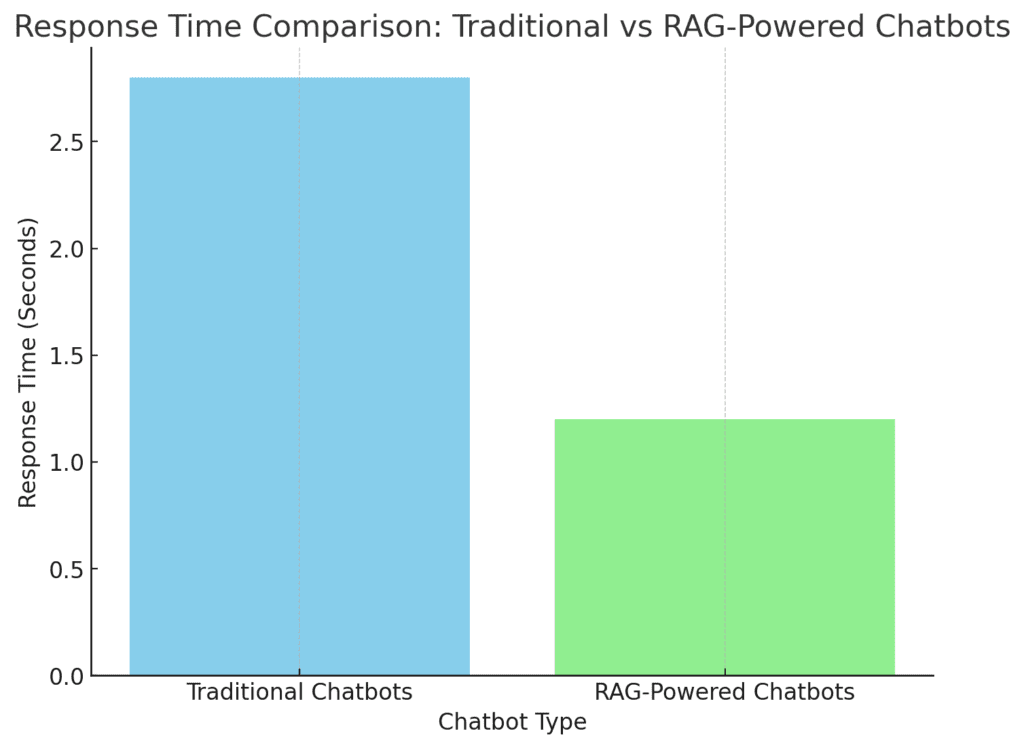
This swift response helps businesses keep their customers happy and satisfied—something that is crucial in competitive industries like e-commerce or telecommunications.
Leveraging External Knowledge Sources for Dynamic Answers
RAG-enabled chatbots truly stand out by their ability to leverage dynamic, external knowledge sources. They aren’t limited to static, pre-programmed data; instead, they can pull in fresh, up-to-date information as needed. Imagine a customer asking for the latest product specifications or the newest software update. A RAG-powered chatbot can retrieve and deliver this real-time information seamlessly.
This dynamic approach is especially valuable in industries where information rapidly evolves. In tech support, for instance, users often need guidance on new features or troubleshooting advice that hasn’t made it into the official support documentation yet. By accessing current, external sources—like FAQs, forums, or knowledge bases—RAG ensures that the chatbot provides answers that are relevant and timely.
Mathematical Representation of RAG
Scalability: Handling Complex Queries at Scale with RAG
Scaling customer support is a challenge for many businesses. The more customers you have, the more complex queries you encounter. Traditional chatbots can only handle a finite set of questions, leading to bottlenecks when they’re faced with a wide variety of inquiries.
RAG offers a scalable solution. Since it pulls from vast external knowledge bases, RAG-equipped chatbots can handle a broad spectrum of queries without requiring constant manual updates. Whether it’s thousands of customers asking detailed questions simultaneously or addressing highly specific queries that would normally require human expertise, RAG makes it possible to scale efficiently while maintaining quality.
This scalability is key for businesses looking to grow without compromising the quality of their customer service.
The Future of RAG-Powered Chatbots in Customer Support
As technology advances, RAG-powered chatbots are poised to reshape the customer support landscape. Here’s what the future holds for this game-changing combination.
AI-Driven Insights for Proactive Support
Predictive Analytics for Customer Needs
RAG chatbots will leverage predictive analytics to identify potential customer issues before they arise. For instance, a chatbot could alert a user about an upcoming bill or a service expiration, offering proactive solutions to reduce friction.
Sentiment Analysis for Enhanced Interactions
Integrating sentiment analysis with RAG allows chatbots to detect customer emotions. This enables bots to adjust their tone or escalate issues to a human agent when needed, ensuring customers feel heard and understood.
Seamless Integration with Emerging Technologies
Voice-Activated Interfaces
As voice recognition tech improves, RAG chatbots will adapt to handle natural voice interactions. This will make customer support more accessible, especially for non-tech-savvy users.
Augmented Reality (AR) Assistance
Imagine troubleshooting your smart device with a chatbot that uses AR. RAG could retrieve instructions while overlaying visuals on your device via your smartphone camera.
Expanding Beyond Traditional Customer Support
Employee Support and Training
RAG chatbots can assist employees by retrieving company policies, training materials, or procedural steps in real time. This boosts efficiency across departments.
Education and E-Learning
Students and educators can use RAG bots for on-the-fly answers to academic questions, making learning more interactive and engaging.
Advancing Natural Language Processing (NLP)
More Conversational Interactions
As NLP evolves, chatbots will sound increasingly human. This will help businesses maintain a conversational, empathetic tone, even in automated interactions.
Handling Multimodal Queries
In the future, RAG systems will manage multimodal input, such as combining text, images, or voice commands. This enhances their ability to provide comprehensive solutions in one interaction.
Ethical and Inclusive AI Development
Addressing Bias in AI Responses
With advanced training models, RAG systems will minimize biases, ensuring that chatbot responses are fair and inclusive for all users.
Accessibility for Diverse Audiences
Future chatbots will cater to users with disabilities, offering features like voice-to-text, text-to-voice, and compatibility with screen readers.
Why Businesses Should Embrace RAG Chatbots Now
The rise of RAG-powered chatbots isn’t just a trend—it’s a necessity. As customer expectations grow, businesses that adopt this technology will stay ahead of the curve, providing reliable, real-time support that fosters loyalty and trust.
By combining advanced AI capabilities with human-like empathy, RAG systems empower businesses to scale their support operations while keeping customer satisfaction at the forefront.
Resources
1. RAG Technology and AI Basics
- OpenAI Research Blog
A great source for foundational knowledge on RAG and related AI technologies. OpenAI often publishes research and case studies on AI models like GPT and RAG.
Link: OpenAI Blog - Facebook AI Research (FAIR)
Facebook AI introduced RAG as a breakthrough method combining retrieval and generation. They have detailed explanations and papers on how it works.
Link: Facebook AI Research on RAG
2. Customer Support and AI Chatbots
- Zendesk Customer Experience Trends Report
This annual report offers insights into how AI, including chatbots, is transforming customer service across industries.
Link: Zendesk Trends Report - Gartner’s AI in Customer Service Analysis
Gartner provides research and insights into how AI is reshaping customer service. Their reports offer deep dives into chatbot trends, use cases, and ROI analysis.
Link: Gartner AI Research
3. Real-World Use Cases and Applications
- Microsoft Azure AI for Customer Service
Microsoft shares several case studies on how businesses are leveraging AI and chatbots, including RAG, to improve customer service experiences.
Link: Azure AI in Customer Service - IBM Watson Chatbots for Customer Support
IBM’s Watson AI is often used for advanced customer service bots. Their site includes white papers and case studies that can give real-world examples of chatbot implementation.
Link: IBM Watson Chatbots
4. Scalability and Performance of AI Chatbots
- McKinsey & Company – AI in Customer Service
McKinsey’s reports provide insights on scalability and performance improvements when integrating AI solutions like RAG-powered chatbots in large enterprises.
Link: McKinsey AI in Customer Service - Salesforce State of Service Report
Salesforce regularly explores the impact of AI on customer service, including how chatbots are being scaled across industries to handle complex queries.
Link: Salesforce State of Service
5. Implementation Tools and API Integration
- Dialogflow by Google Cloud
Google’s Dialogflow is a great resource for businesses looking to build AI-driven chatbots, including features that support RAG-style models.
Link: Dialogflow by Google - Rasa Open Source Conversational AI
Rasa is an open-source platform for building AI chatbots. They provide documentation on integrating knowledge bases and real-time data sources into chatbots.
Link: Rasa